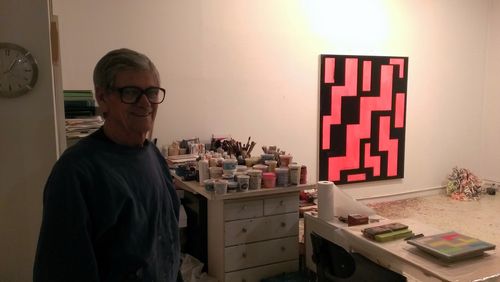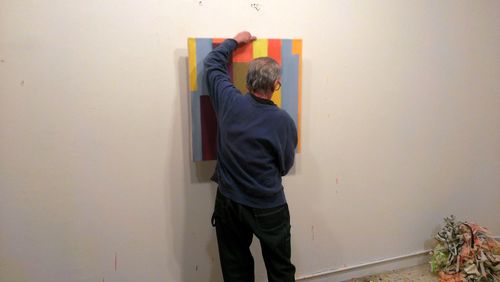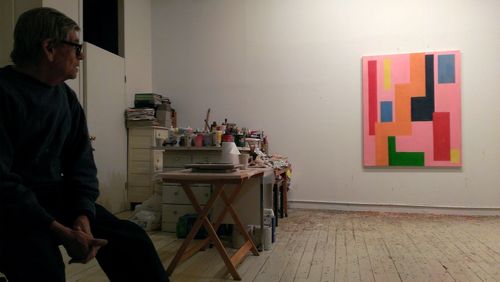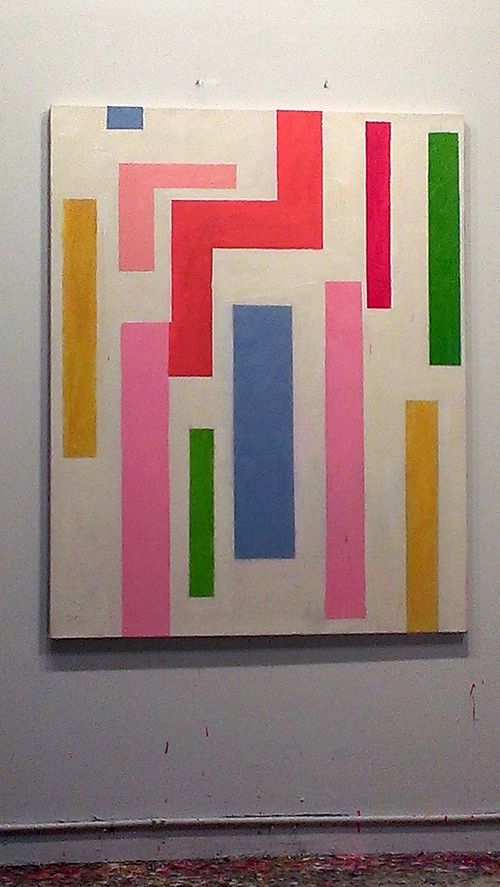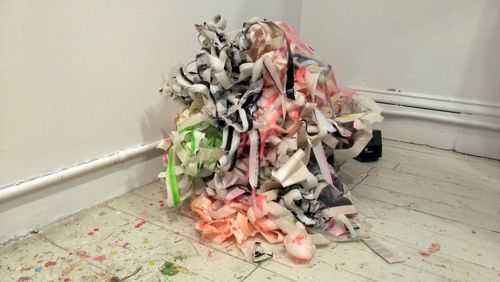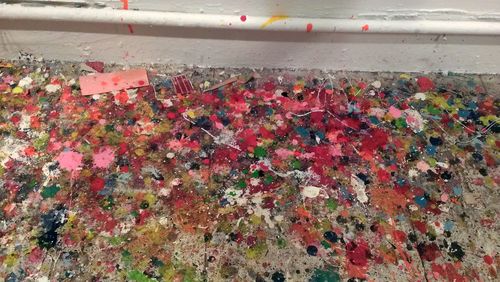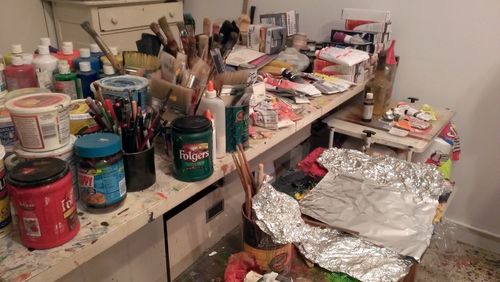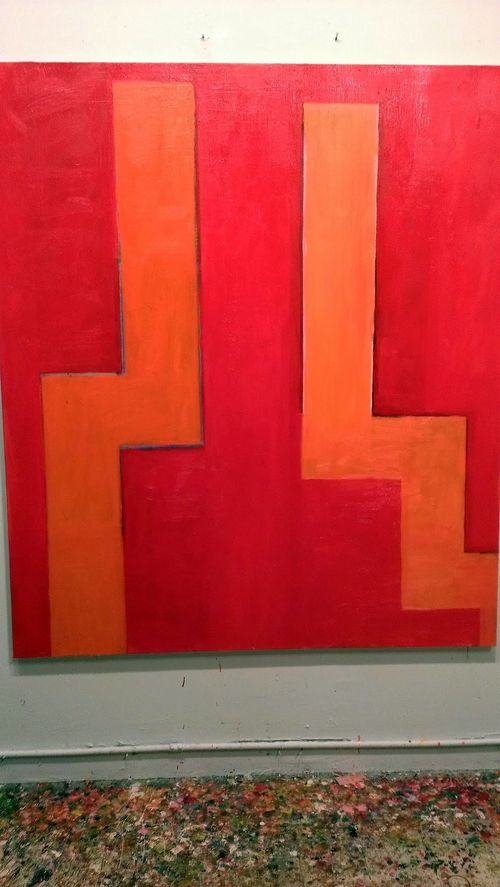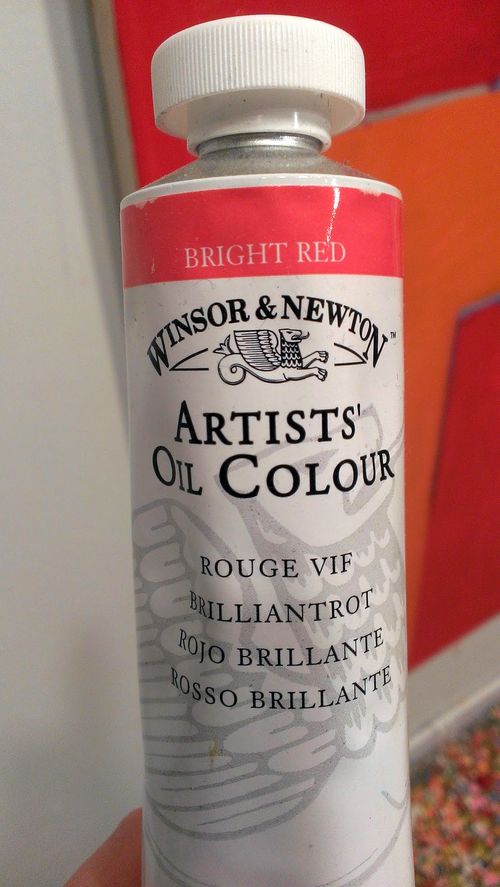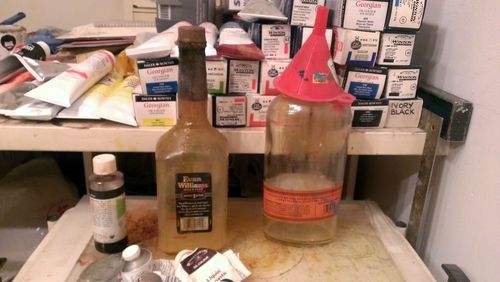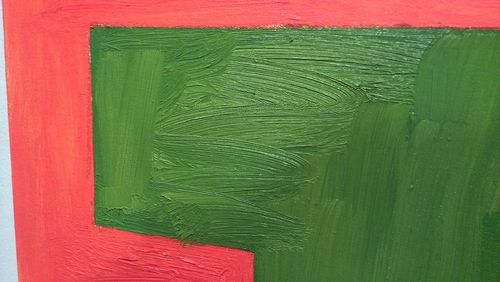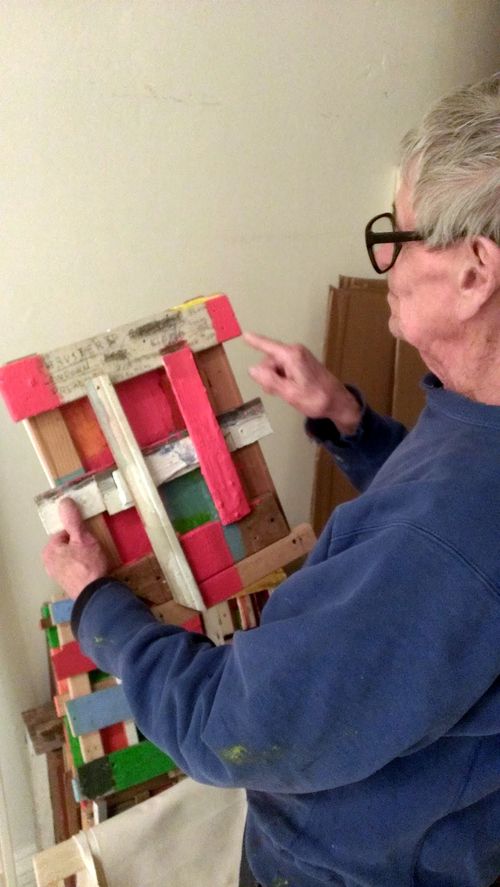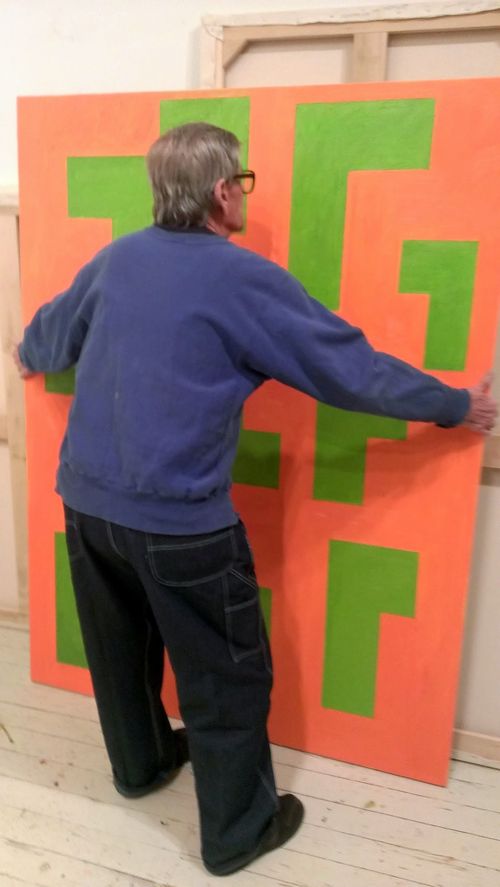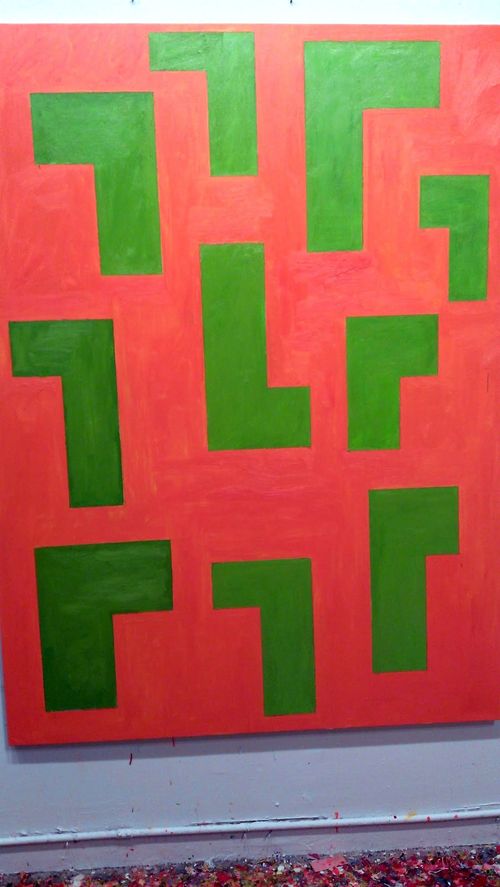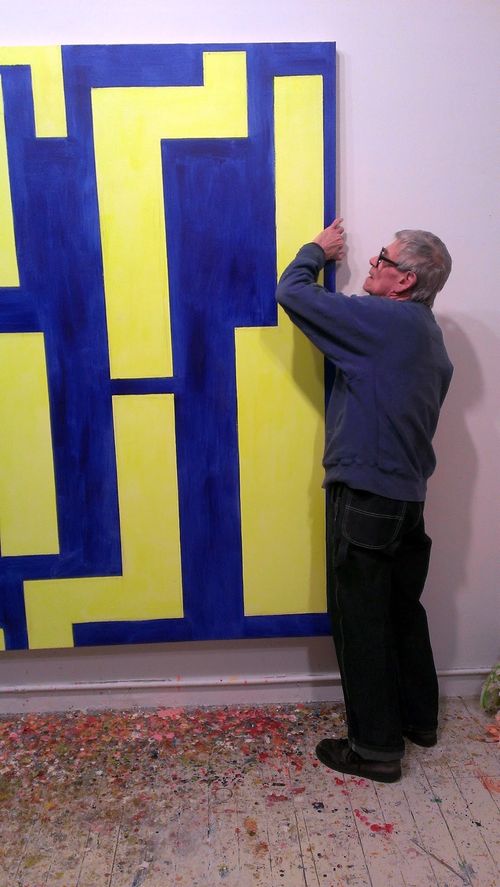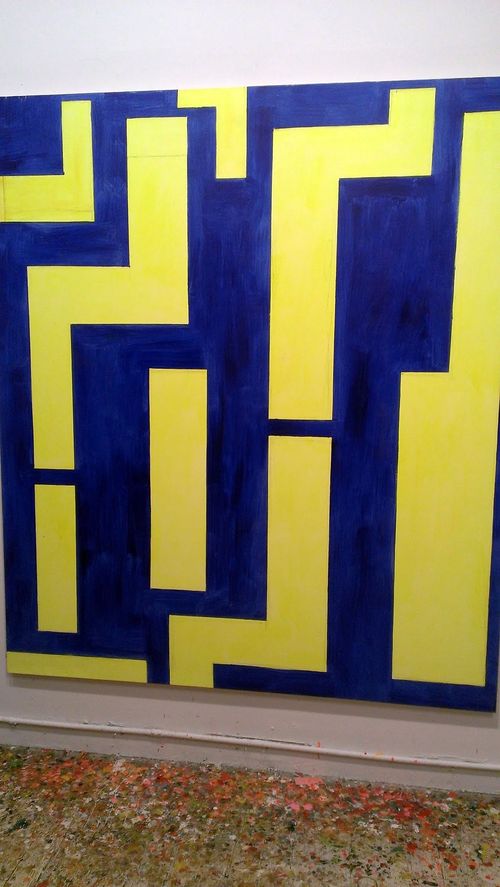Welcome visitors from Painters' Table!
James writes:
I recently visited the Soho studio of Thornton Willis as he prepares for his upcoming exhibition at Elizabeth Harris Gallery, opening on March 14, 2013. (All photographs by James Panero.)
Thornton's abstractions are a blend of geometry and intuition. For his latest series, he pares down his forms and used strong color contrasts to energize the tension between figure and ground.
Thornton begins with a base layer of acrylic and often finishes his paintings in oil. Sometimes he leaves the acrylic layer exposed, as in the example above.
Thornton is one of Soho's artist pioneers. He and his family moved into the loft where he lives and works in the 1970s. Over the past decade, his work has attracted a new range of interest. In Art & Antiques, I described him as "The Comeback Kid."
Over many paintings, Thornton develops different geometric themes. When I wrote the catalogue essay for his 2009 show at Elizabeth Harris, Thornton was using a lattice. For a decade before that, the triangle dominated his compositions.
A profile of the abstract painter Thornton Willis from James Panero on Vimeo.
Thornton uses tape to mask off his edges, then often works paint back in to obscure the hard lines.
Decades of paint on the floor of his live-in studio.
Thornton's painting table, with his palette kept wet under aluminum foil.
Thornton looks for the essense of abstraction, Here he distills his shape and color choice to a minimum, with two orange power chords vibrating on a red ground.
His color of choice is called "bright red."
Thornton blends his own medium out of linseed oil, stand oil, turpenoid, and other substances in old whiskey bottles.
Added to the oils from the tube, the medium gives his paint a creamy finish.
As a side project, Thornton brings his figure-ground dynamic to full relief with these wall sculptures constructed of found wood.
Thornton works in both large and small scaled canvases but rarely in between.
These two colors, tracing out recurring shapes, have an op-art resonance.
The same goes for these color contrasts. Seemingly simple forms and color choices resonate due to Thornton's studied placement and paint-handling.
Thornton Willis's next exhibition will be on view at Elizabeth Harris Gallery from March 14 through April 13, 2013.
